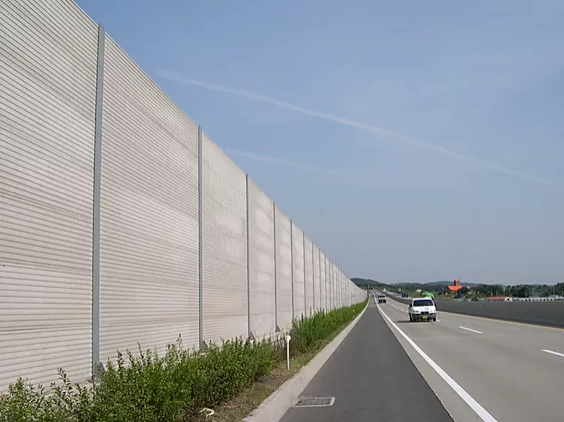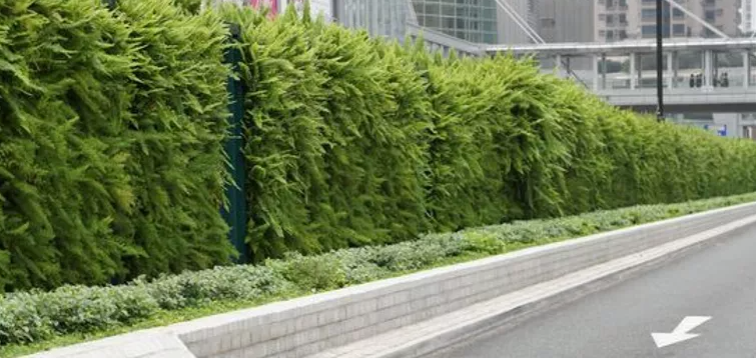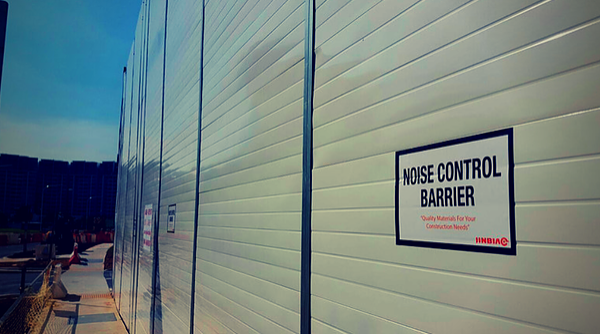If you’re looking for effective noise barriers, you’ve probably come across two common options: concrete and panels. Both materials are widely used for reducing noise in residential, commercial, and industrial spaces—especially along highways and busy roads. But which one is the right fit for your project?
While both concrete and panels provide sound insulation, they differ in performance, cost, aesthetics, and ease of installation. Understanding their differences will help you make an informed decision tailored to your specific needs.
Noise barrier has been applied to numerous scenarios in the past and the most popular application would be the side of roads where traffic movement is of abundance. Back when researching Noise Barriers was not prioritised, many countries resorted to using concrete and wood for their noise mitigation solution.
Now, much research has been done and comparisons have been made between those mediums to see its effectiveness and performance. Mediums like concrete, hollow blocks, and vegetation are used especially in countries that are developing and have grown interest in being more responsible for the environment.

Hollow block barriers are a much better improvement from the concrete barriers. The internal structure of this barrier has ‘holes’ that dissect the sound wave travelling through it, disrupting its ‘energy’. Even though these blocks are lighter than concrete blocks, it still heavy and require a lot of man-hours/manpower for installation.

Concrete barriers has been effective back in the days until people found out that having such system means having to accept that the barrier has to be heavy, costly and only reflects noise away from receiver.

Vegetation barriers are, however, a better way to go head on with environmental issues. Though such system has very minimal noise mitigation properties, its capability to reduce carbon emission and its aesthetics properties are seen to be a far better choice to the other earlier option.
The Innovation Noise Mitigation System
A noise mitigation system was developed to counter noise problems from its source. Basically, having such a system allows the receiving end to receive the lesser impact of the noise where research has gathered that prolonged exposure to noise has a significant negative impact on the receiver’s health.
Over the years, government involvement in decreasing noise pollution brought about changes to be made to the mitigation system. Changes brought about to the old system forces companies to innovate the way noise barriers are supposed to be. Factors such as its performance, the man hours needed to install and the manpower needed to install on-site, all play an important factor in innovating a new version of the product.
The involvement of government bodies further encourages research to be carried out to develop findings on the various performances for different barriers used in the past up till now in various locations.
Research done in Malaysia concluded as below:
Vegetation recorded the lowest insertion loss in this study. The concrete hollow blocks are fairly effective as noise barriers to protect receivers from traffic noise pollution. Moreover, the concrete panel has stable and sufficient insertion loss recorded during the measurement session. This was also due to the diffraction and refraction of noise waves by the flat and solid surface of concrete hollow blocks facing the highway. The cavities inside both concrete hollow block and concrete panel noise barriers help to absorb the noise from traffic on the highway.
The precast concrete panels perform a consistent insertion loss throughout all measurement periods as compared to the concrete hollow blocks. This is correlated to the fact that the concrete hollow blocks also need to rely on wall joints between the blocks; rather than depending only on the cavities to reduce the noise. As the construction of a concrete hollow block noise barrier includes a lot of joints between blocks as compared to the precast concrete panels, there is the possibility that sound leakage occurs between the joints and reduces the insertion loss of the concrete hollow block noise barrier.*
A few years back, Hebei Jinbiao, started with poly-carbonate panels where sponge-like materials are used as the mechanism to mitigate the noise. However, the performance was acceptable but soon became unproductive for the amount of work put in place for the installation.
Soon after, the government set in place performance criteria to be met which led to innovations and a new era of products to be brought into Singapore for both temporary and permanent works.


Both concrete and panels have their strengths when it comes to reducing noise pollution. If you need a durable, heavy-duty solution for high-noise environments, concrete is the ideal choice. However, if you value flexibility, aesthetics, and easy installation, panels might be the better option.
Ultimately, the right material depends on your project’s specific needs, budget, and environmental conditions. Whether managing highway noise, construction sounds, or residential disturbances, choosing the right noise barrier ensures a quieter, more comfortable environment.